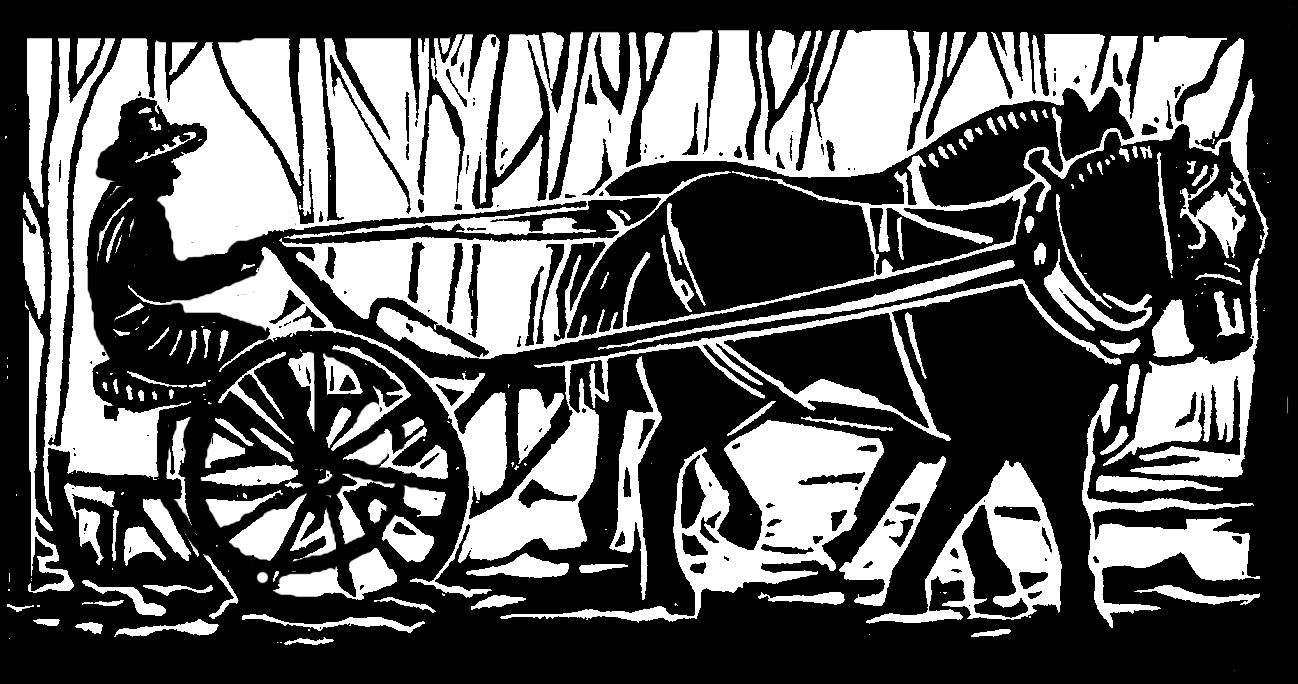How do New Hampshire farmers amuse themselves? Oh, many ways. We might stand a while watching our draft horses kick and gallop and buck in the new pasture, wishing that we too had the pep to kick and gallop and buck in the fall, when we are still in high production season.
Or we might sit a while, which is more fitting to our autumnal energy level, watching the wild turkeys out the kitchen window. We have a picnic table down by our pond, and one day not long ago there were five big turkeys sitting, lying, grooming, and chatting there in the sunshine. This was quite amusing: turkeys on the picnic table! “It's a good thing we're vegetarian!” we called to those big old turkeys.
We farmers also amuse ourselves by paying the farm bills. “Oh ha ha!” we say, “Look at this enormous bill! Ha ha ha!” Sometimes we are having such a good time paying the bills that we invite our kitty to help. We wad up various pieces of bills and throw them around the room, and our kitty has a fine time chasing them down. It sure is nice to see the kitty attacking the bills, and it brings a whole new spirit of joie de vivre to the process.
Of course, as New Hampshire vegetable farmers, we also amuse ourselves with vegetables, and all the interesting ways vegetables can grow: the conjoined-twins summer squash, the mother-and-child eggplant, the monster-from-the-deep-sea green pepper.
We are not the only ones who find vegetables entertaining. Over at the Guilford Fair in Vermont, there is the Richard D. Blazej Humorous Vegetable Contest. I did not know Mr. Blazej, but he must have been a fine fellow. Even the name of his contest is funny: What is a Humorous Vegetable? Why, it must be one that tells jokes.
Thus our country-fair-farmer-amusement began. Our first humorous vegetable was a tomato, a fine ripe plump tomato, with a fine ripe bulbous nose. That year we were also growing wonderberries, a tiny odd purple fruit in the same family as tomatoes, and we used the wonderberries to make eyes for our tomato. Two green beans for arms, a toothpick and cardboard sign, and voila! Our humorous vegetable told a funny joke: “Why did the tomato blush?” “Because it saw the Russian dressing!” (Thanks to Sandwichery: Sandwich Recipes and Riddles, a very silly book by Patricia and Talivaldis Stubbles.)
The next year we were equally amused by a lovely little leek with seed eyes, reclining in a tiny wooden canoe, about ten inches long, and two inches wide, perfect for a seafaring leek. Of course, the leek had a sign: “What's the only vegetable you don't want to take in a boat?” “A leek!” (A leak! Get it? Thanks to our funny six year old friend Charlie.)
This year we outdid ourselves. We had a tomato drawstring purse, with carrot top handles, and carrot coins. We had a little white cucumber that looked just like an egg, in a cabbage leaf nest. But our piece de resistance was composed of carrots. Carrots are also very humorous vegetables, in case you didn't know.
First there were two carrot children, with their own naturally (organically!) grown legs, and with carved eyes and happy smiles, added by the farmers. The children rested on a pillow, with a sign: “Tell us a story, Grandmaw!”
Nearby was a rocking chair, made of clothespins, and there sat Grandmaw, a grandmother carrot perfectly folded in her growing to sit in a rocking chair. Her sign read: “Once upon a time there was a pair of sweethearts . . . ”
Then there were two more carrots, passionately entwined (well, actually one was passionately entwined, with carrot arms clasping for all it was worth; the other carrot looked a little startled by all that passion.) Their sign read, “Do you carrot all for me?”
But this is not all. There was a fourth sign, identifying the fair exhibit: "The Carrot Tableau." The farmers looked up the word tableau beforehand just to make sure they were using it correctly. “A striking incidental scene, as of a picturesque group of people [or carrots],” is the American Heritage Dictionary definition (parenthetical remark added).
Have you ever heard anything so absolutely perfect? So very amusing? The Carrot Tableau? Oh ha ha ha! We might also mention here the equally absolute perfection of the dictionary definition of piece de resistance: “1.The principal dish of a meal. 2. An outstanding accomplishment.”
Yes indeed, an outstanding accomplishment, stunning in its humor! Farmers have so much fun.
Originally published in the Monadnock Shopper News, Oct 19 - Oct 25, 2016
